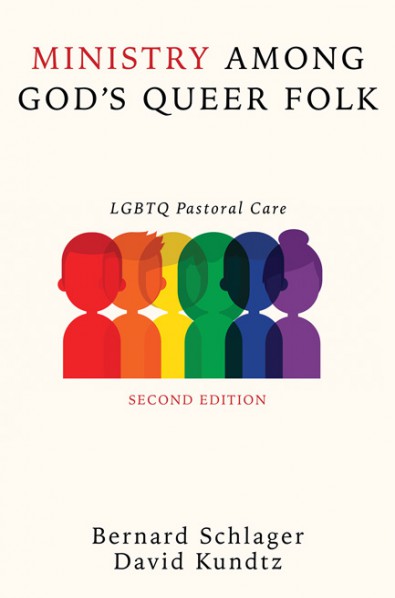A congregation interested in becoming a community of care should begin with education and compassionate dialogue. The leaders and members of a church or synagogue will need to educate themselves about sexual orientation, gender identity, and the most genuine and effective ways to integrate LGBTQ people into the life of the congregation. Throughout this process a congregation needs to make and realize a commitment to engage in open and honest conversation with queer people about their lives.
A Selection of Resources for Building a Welcoming Congregation
- Coming Out While Staying In: Struggles and Celebrations of Lesbians, Gays, and Bisexuals in the Church. Leanne Tigert.
- Enfold: a Reconciling Congregation Explores What it Means to Welcome All People. Karen Oliveto, ed.
- Homosexuality and Judaism: A Reconstructionist Workshop Series. Robert Glück, ed.
- Inclusion: Making Room For Grace. Eric Law.
- Kulanu: All of Us – A Program and Resources Guide for Gay, Lesbian, Bisexual, and Transgender Inclusion. Richard Address, Joel Kushner, and Geoffrey Mitelman, eds.
- Living the Welcoming Congregation. The UUA Office of Bisexual, Gay, Lesbian, and Transgender Concerns.
- Made in God’s Image: A Resource for Dialogue about the Church and Gender Differences. Ann Thompson Cook.
- More Than Welcome: Learning to Embrace Gay, Lesbian, Bisexual and Transgendered Persons in the Church. Maurine Waun.
- Rainbow Theology: Bridging Race, Sexuality, and Spirit. Patrick S. Cheng.
- Talking About Homosexuality: A Congregational Resource. Karen Oliveto, Kelly Turney, and Traci West.
- Their Own Received Them Not: African American Lesbians & Gays in Black Churches. Horace Griffin.
- Transitioning to Inclusion: Embracing Lesbian, Gay, Bisexual, Transgender, and Questioning Youth in Faith Communities. Kelsey Pacha, Center for LGBTQ and Gender Studies in Religion (CLGS).
- Umoja: Unity in the Community Curriculum [for African American Christian congregations]. Roland Stringfellow.
- The Welcoming Congregation Handbook: Resources for Affirming Bisexual, Gay, Lesbian, and/or Transgender People. The UUA Office of Bisexual, Gay, Lesbian, and Transgender Concerns.
- Where the Edge Gathers: Building a Community of Radical Inclusion. Yvette Flunder.
- A Whosoever Church: Welcoming Lesbians and Gay Men into African American Congregations. Gary David Comstock.
Many congregations have found it helpful to form a welcoming taskforce to facilitate the process of deciding how to become welcoming and inclusive. Composed of laity and clergy, queer and non-queer people, congregational staff members and perhaps individuals from outside of the congregation, this taskforce should be commissioned at a Sabbath or Sunday worship service. The primary duties of the taskforce include exploring current denominational and congregational attitudes toward homosexuality and transgenderism and working to educate the congregation on how to build a community of care. The ultimate goal of this taskforce should be to draft a statement of welcome for the congregation’s consideration.
The taskforce will also want to consult resources on building welcoming congregations, including curricula that have been developed within the congregation’s own religious tradition. Soon after its formation the taskforce should engage the entire congregation in a process of learning and dialogue by means of weekly classes, panel presentations, reading materials, and/or discussion groups that explore the following important questions and issues:
Some Important Questions & Topics for Discussion:
- How do non-queer members feel about welcoming and including queer people in the life of the congregation?
- Take a survey of congregants to understand better their current attitudes on homosexuality, transgenderism, and bisexuality.
- In some congregations discussions about sexuality can be highly charged and potentially contentious.
- Be prepared for potentially heated discussions and work to create a safe environment for individuals to disagree with each other. State clearly that differing points of view are welcome and emphasize that all opinions expressed in a spirit of love and respect will be heard.
- What does the congregation’s faith tradition have to say about human sexuality in general and homosexuality, bisexuality, and transgenderism in particular? How have queer and non-queer individual theologians, clergy, and laity (from inside and outside the congregation’s particular tradition) dealt with issues relating to sexuality and LGBTQ people in the past thirty years?
- Offer education nights and/or weekend classes on homosexuality and LGBTQ issues for your congregation. Have your minister or rabbi preach on homosexuality and queer people. Mention frequently the congregation’s journey toward welcome in congregational worship.
- What do psychologists and other medical professionals have to say about sexual orientation, gender identity, bisexuality, and homosexuality?
- Provide accessible reading materials on homosexuality, bisexuality, and transgenderism that have been written by respected doctors and psychologists.
- Listen to the experiences of queer people of faith.
- Host a panel discussion with queer people, recommend books and articles by queer theologians and spiritual writers, and include writings by queer people of faith in your congregational newsletter. Invite any LGBTQ individuals, couples, or supportive relatives or friends of queer people who are already in your congregation to speak about their life experiences.
- What can the congregation learn from congregations that are known to provide excellent pastoral care for queer people?
- Invite lay members and clergy from nearby welcoming congregations as well as representatives from denominational LGBTQ groups to share their knowledge of how to build communities of care. Visit welcoming congregations to see firsthand how their members welcome and include their queer members.
To Be Continued Next Week!
Adapted from Schlager & Kundtz, Ministry Among God’s Queer Folk: LGBTQ Pastoral Care (Second Edition, 2019): pp. 156-159.



